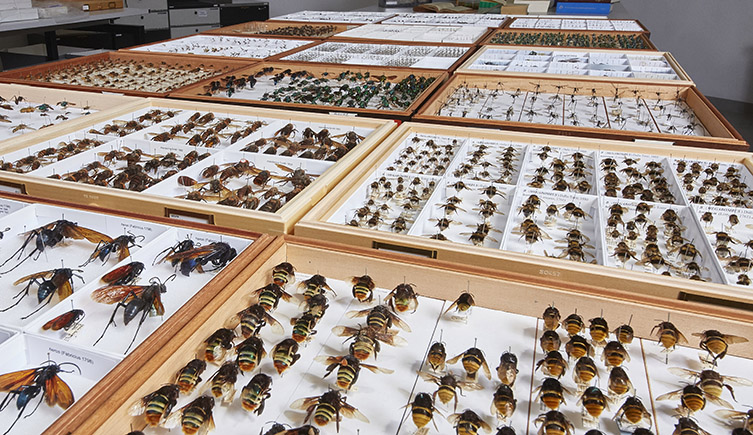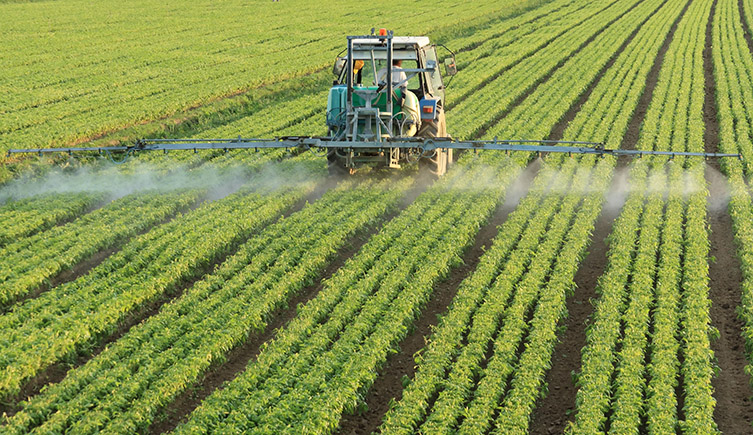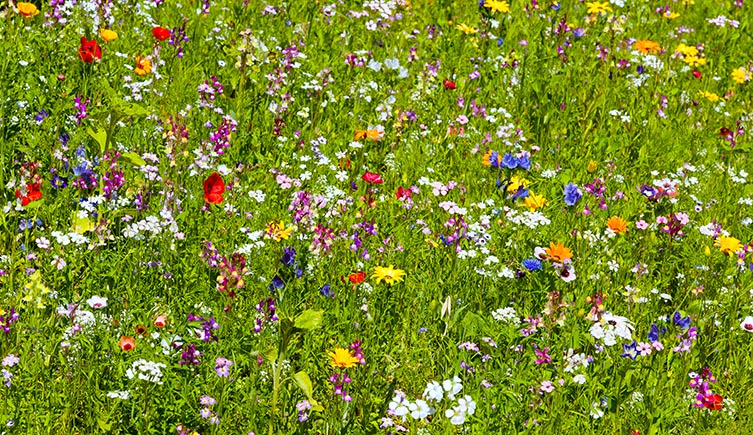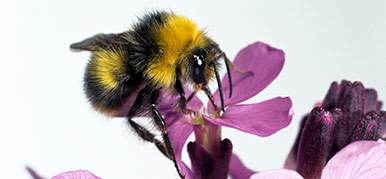Earlier this year, the EU placed a near-total ban on the world's most popular pesticides.
But which bee populations are really affected by pesticides, and is banning them the way forward?

Many species of bee, such as this mining bee, have been declining across their native ranges © Ed Phillips/Shutterstock
Earlier this year, the EU placed a near-total ban on the world's most popular pesticides.
But which bee populations are really affected by pesticides, and is banning them the way forward?
It's easy to be confused about which bee species are most under threat from human activity.
Prof Dave Goulson, a world-leading bee expert at the University of Sussex, explains, 'There are a lot of species of bee and they're not all necessarily behaving in the same way. People particularly conflate honeybees and wild bees.'
While in general the population of honeybees depends on the demand from farmers, this is clearly not the case for the wild ones. This has 'led to endless confusion', says Dave.
The honeybee is represented by just 10 species, but there are almost 20,000 species of wild bees found on every continent except Antarctica. This huge diversity and range of insects makes their protection difficult, as species living in different countries face differing threats.
Europe is one of the most studied regions when it comes to bee populations, yet there is still much we don't know about how to safeguard bees and prevent declines, or even which species need our help the most.
There are a number of factors at play, including climate change, loss and fragmentation of habitat, parasites, urbanisation and agricultural intensification.

Bees are an incredibly diverse group, as shown here along with other members of Hymenoptera © The Trustees of the Natural History Museum, London
Much has been made of the downward trend in pollinator populations in recent years, but it is not a new issue. There have been three key time periods that saw a decline in bee numbers, and it is thought that the recent trend is simply following these historic ones.
From looking at past bee extinctions, the first big hit appears to have been during the Industrial Revolution, as human populations and food production boomed.
Then in 1910, the Haber process (making ammonia from nitrogen and hydrogen) was developed to produce on a massive scale, once again boosting agriculture and impacting bees.
Finally, one of the most significant shifts happened following the Second World War. In the decades following the conflict, the practice of crop rotation declined and farmers stopped using draft animals to pull machines.
Paul Williams, at the Museum and co-chair of the International Union for Conservation of Nature's Bumblebee Specialist Group, explains, 'You had a replacement of these two things with inorganic and farm machinery. After removing the animals and the crop rotation, the amount of clover being grown went down.
'Bumblebees really like to forage on clover, and so it was almost certainly a major factor in their decline.'

The of agriculture had a significant impact on bee numbers as farmers no longer needed to grow clover to feed the draft animals © Canadian Museum of History/Wikimedia Commons
In recent years, however, there has been growing interest and concern surrounding the use of pesticides, in a group as neonicotinoids.
These pesticides work by affecting the nerves of insects.
Richard Gill, from Imperial College London, studies how factors associated with land use change affects pollinating insects. He says, 'They target what are known as nicotinic acetylcholinesterase receptors. These are similar receptors to those that nicotine binds to in humans.'
The receptors are mostly found at the point where nerves come together and signal to each other, known as synapses. 'When something binds to the receptor, it stimulates the nerve and creates a pulse,' says Richard.
'Effectively, this information tells the insect how to move, think and learn. Normally, a second molecule will then come and break down the substance that is stimulating the nerve.'
With neonicotinoids, however, this is where the problems arise. The molecule of neonicotinoid has high affinity to the receptor, meaning that it is very difficult or be removed and so continually stimulates the nerve.

Neonicotinoids bind strongly to synapses in the brains of bees, causing the insects to have a seizure © D B Smith et al. 2016 Gill Group/Imperial College/NHM Imaging
'Basically, it causes the insects to become hyperactive. Too much stimulation and the insect has a seizure, a bit like an epileptic fit,' says Richard.
But that isn't the whole picture. The of pesticides that insects are typically exposed to while out foraging is much less than what is deemed lethal.
'We've been asking for the last decade whether pesticides are causing sub-lethal effects in individuals,' says Richard.
Recent work is now beginning to show that while the levels of pesticide don't kill exposed bees, the behaviourally impaired individuals affect the normal function of colonies.
'Trying to then examine that at the population level is once more very difficult, and this hasn't really been done yet,' says Richard. 'Additionally, while we know the ranges of bee species have changed, it is not clear whether the remaining populations are healthy or not.
'We need to pinpoint whether range contractions are due to losses of bees, or simply changes to where they are living.'

There is still a lot we don't know about how pesticides impact bees, such as the effect they have at a colony level © KreativKolors/Shutterstock
What is not under debate is that pesticides are harming bees and other insects. After all, that is what they're designed to do. It is also true that there has been a rise in their use over recent times.
'The average field is treated with pesticides 17.4 times a year in the UK,' says Dave. 'Farming has become heavily dependent on pesticides, and around 500 different types have been licensed in the European Union alone.'
This has resulted in a lot of support for the banning of neonicotinoids, with the EU already restricting the use of three of them and France going a step further and fully banning five types of neonicotinoids.
To many of this might seem like an obvious solution to a chemical that is harming vital pollinators. But is this the right course of action, and can it guarantee a halt in the decline of bees?
There is a fear that the blanket ban on these chemicals will lead to the proliferation of alternatives which are less well understood but potentially equally damaging.
'Even though I supported the ban of neonicotinoids, I don't think it will necessarily be helpful,' explains Dave. 'I think that they will just be replaced. There is already controversy over whether these new ones are any better.

The use of pesticides around the world is increasing and is almost certainly harming bees © Federico Rostagno/Shutterstock
'The debate about bee declines has become too focused on pesticides. There is a real danger that people will think that banning neonicotinoids will solve the problem and that we can then stop worrying about the bees.
'But bees were declining long before pesticides came along. They may not have helped, but getting rid of them is not the sole solution.'
The question is about weighing up a known risk, the neonicotinoids, against an unknown risk of any potential new pesticides.
'At least with the there is a decade's worth of data allowing scientists, farmers and policy makers to make more informed decisions,' says Richard.
Dave suggests that rather than arguing over which pesticides are best and worst, conservationists should be working with the industry to reduce the total amount and number of chemicals being used in general.
There should also be more focus on reversing the land use change that has swept the countryside during the past .

Planting wildflowers where ever they can grow is one of the simplest and yet most effective ways we can help bee populations © Olgysha/Shutterstock
'Since the eighteenth century, what you have in central England is a landscape dominated by large, open fields,' says Paul. 'The reduction in bumblebee abundance is clearly not a good thing, but it is unlikely that they will be driven to extinction globally due to pesticides.
' we can identify that there are serious land use issues in this country. This appears to be what reduced the ranges of some bumblebee species in Britain before nicotinoids were applied.'
There should be more of a focus on the better restoration of wildflower-rich meadows and pastures, and better management of those ones that already exist.
From the nectar-rich margins surrounding fields to orchards, hedgerows, ditches even brownfield and industrial sites, encouraging more locally sourced flowering plants by far one of the most critical moves.
'That is something we should all be supporting,' says Paul.

We're working towards a future where both people and the planet thrive.
Hear from scientists studying human impact and change in the natural world.

Find out about the plants and animals that make the UK home.

A pocket-sized ID guide to the six main species of UK bumblebees.
Don't miss a thing
Receive email updates about our news, science, exhibitions, events, products, services and fundraising activities. We may occasionally include third-party content from our corporate partners and other museums. We will not share your personal details with these third parties. You must be over the age of 13. Privacy notice.
Follow us on social media